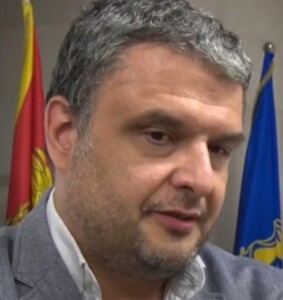Last year’s 85% drop in tourist traffic revealed all the vulnerabilities of the Montenegrin economy.

Dr Ivo Zupanovic
The 85% decline in tourist traffic, predominantly caused by the COVID-19 pandemic, significantly affected the overall realisation of GDP, subsequently causing a 15% drop. The very fact that tourism and its impact on complementary areas accounts for around 25% of Montenegro’s total GDP speaks volumes when it comes to the macroeconomic aspect of the economy. Considering the above negative economic effects at the macro and micro levels, in order to reduce the vulnerability of the Montenegrin economy in the coming period, it is necessary to do the following:
- Diversify economic activities: The above mentioned facts further indicate that a different economic structure and significantly greater diversification is needed in the coming period, with significantly less reliance on the service sector in order to be more resilient to external shocks. This is possible in the medium and long term, with parallel development of the green economy, energy sector and agriculture.
- Improve traffic accessibility: From a tourist system perspective, we should constantly work on traffic accessibility. Countries that were able to substitute air travel with road traffic achieved a decent result during the pandemic – for example, Croatia (37.49% of arrivals or 50.05% of overnight stays compared to 2019). Around 60% of key emission markets were available by road in this example. Dependence on air traffic has been felt by a number of countries, such as Spain, Cyprus, Turkey, and parts of Croatia which rely on air transport like the Dubrovnik-Neretva County, where there has been an 80% decline in arrivals.
- Strengthen the domestic tourism market: We need a greater focus on the domestic tourism market, as the current 5.13% share is not enough. Of course, due to the structure of tourist demand, the domestic market cannot be the carrier of tourist traffic, but there is potential to at least double its contribution. In these times of crisis, it is precisely the domestic market that has brought stability to certain destinations. Take the example of Albania, which achieved 45% of tourist arrivals compared to 2019, 51% of which was domestic tourist traffic.
- Recognising key markets Based on tourist traffic in the domain of arrivals in 2019, it should be noted that EU markets + Great Britain accounted for 35% of tourism, regional markets for 34%, and Russia, Belarus and Ukraine for 17%. I would like to emphasize that we must not neglect the EU market due to the pandemic. On the contrary, additional efforts need to be made and bilateral contacts strengthened in order to maintain these markets, primarily due to a much more significant discretionary income compared to regional markets – the first ten EU countries have 5 to 7 times higher value in terms of net earnings compared to the markets of the region. Of course, regional markets are our traditional markets that guarantee stability even in these times of crisis. When it comes to the Russian market, I think that strong bilateral activity is also necessary for the largest airlines to launch and then intensify traffic towards Montenegro.
- Health Protocols: The state’s efforts in covering the costs of Covid testing for foreign guests, as well as treatment for COVID-19, are to be commended. Observing our neighbours in Croatia, we should consider the options they offer, for example that local governments enable accommodation for persons who have to be isolated or quarantined, as well as possible covering of costs like in the municipality of Brac. The protocols in the field of cruise and excursion tourism should also be presented in more detail.
Prof. dr Ivo Zupanovic, expert in the area of tourism, author of over 40 published works, and three university textbooks. Professor at both undergraduate and postgraduate programmes in Montenegro



Leave A Comment